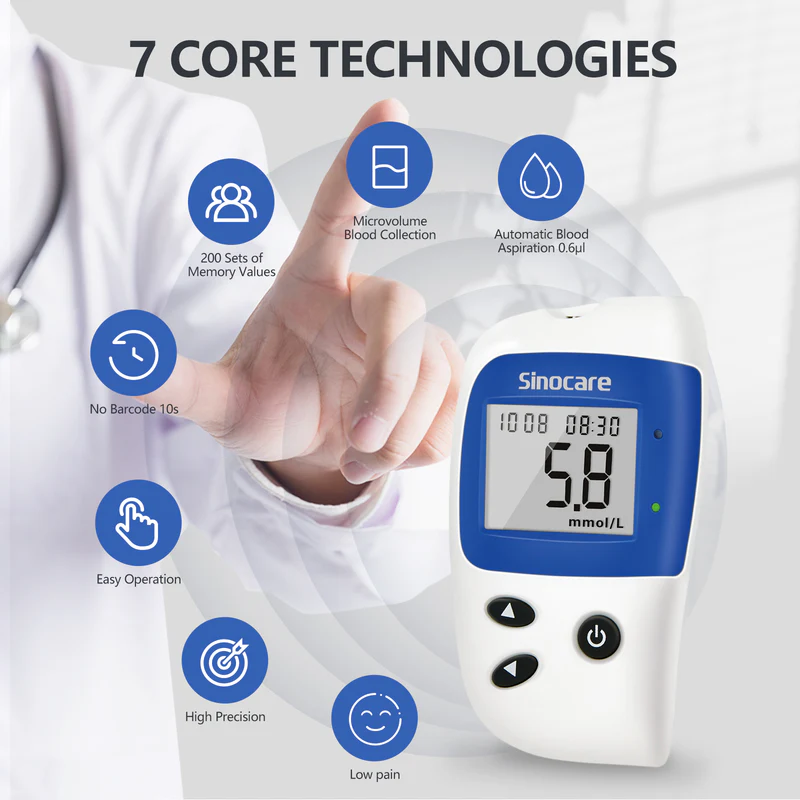Many diabetes users observe that different blood sugar monitor(commonly referred to as blood glucose meters) may present slight discrepancies when testing the same blood sample. This occurrence is widespread and linked to multiple technical and practical factors, which are central to understanding blood glucose meter accuracy comparison. While such variations are typically within clinical tolerance, clarifying their causes helps users trust their blood sugar monitor results and make sound diabetes management choices.
Technical Design Disparities: A Core Factor in Blood Glucose Meter Accuracy Comparison
Every blood sugar monitor is equipped with unique internal components and design specifications that shape its readings. Manufacturers adopt distinct sensor technologies, data processing algorithms, and test strip chemical formulas—for example, some blood sugar monitors use FAD-GDH enzymes, while others rely on glucose oxidase. These differences mean each device interprets glucose levels marginally differently, even with the same blood sample. Blood glucose meter accuracy comparison across brands or models often uncovers these inherent variations, as international standards (like ISO 15197) permit a small margin of error for reliable devices instead of mandating identical results.
Test Strip Quality and Storage: Influencing Blood Sugar Monitor Readings
Test strips are pivotal to a blood sugar monitor’s performance, and variations in their quality or storage can trigger reading differences. Each blood sugar monitor requires compatible test strips, which may have batch-to-batch fluctuations in reagent stability. Improper storage—such as exposure to heat, humidity, or using expired strips—further impairs accuracy. When conducting a blood glucose meter accuracy comparison with the same blood sample, using strips from different batches or those with compromised storage can lead to discrepancies, even if the blood sugar monitors themselves are functioning correctly.
Operational Variables: Impacting Consistency in Blood Glucose Meter Accuracy Comparison
User-related operational factors also contribute to differing readings between blood sugar monitors. For instance, insufficient blood sample volume, hemolysis (red blood cell damage) from excessive finger pressure, or failure to calibrate a blood sugar monitor as recommended can all alter results. When testing with multiple blood sugar monitors, slight differences in how the sample is applied (e.g., timing, strip contact) or device maintenance (e.g., cleaning sensors) can cause variations. Blood glucose meter accuracy comparison must account for these variables, as they affect each device’s ability to process the same blood sample uniformly.
Understanding Variations: Prioritizing Reliable Blood Sugar Monitor Performance
Slight reading differences between blood sugar monitors are normal and within clinical standards, provided each device meets accuracy requirements. The focus should be on choosing a consistent, trustworthy blood sugar monitor rather than pursuing identical readings across devices. For users seeking dependability, the Sinocare Safe Accu 2 Blood Sugar Monitor is an excellent option. It delivers stable performance within acceptable tolerance ranges, supporting confident glucose tracking that aligns with the practical needs of blood glucose meter accuracy comparison in daily diabetes care.


